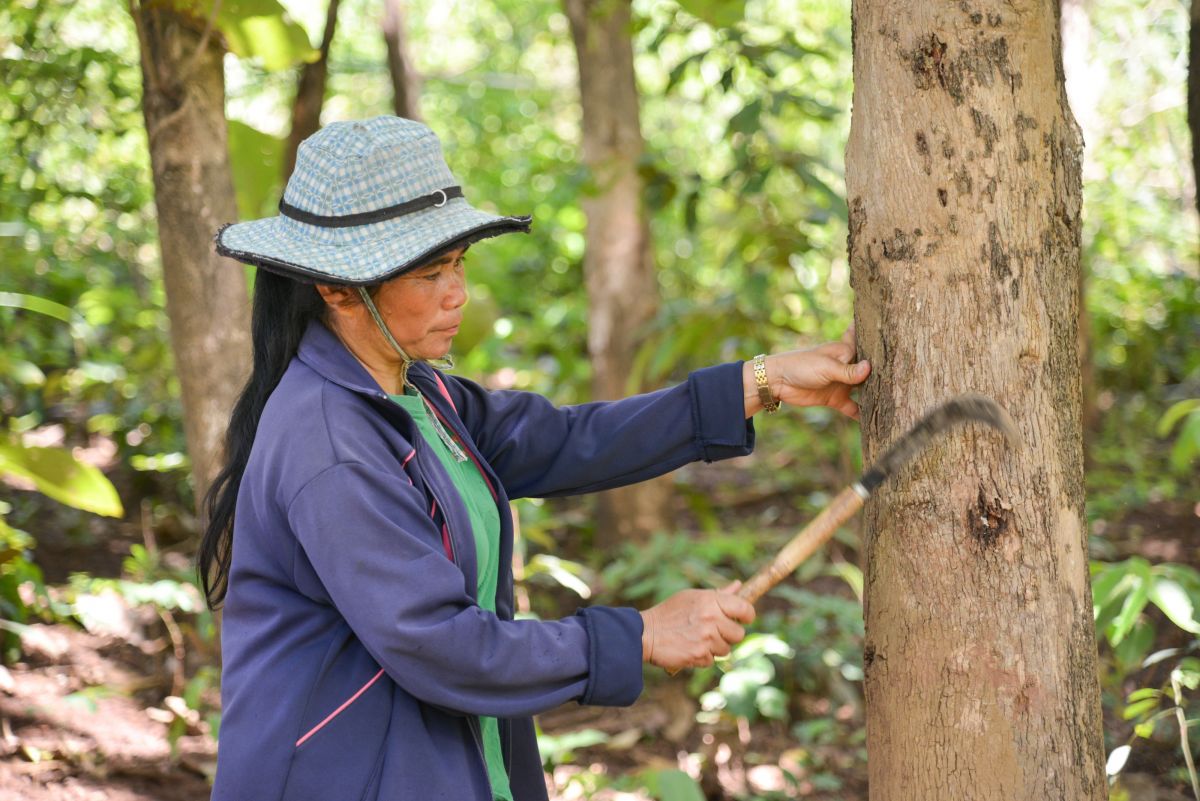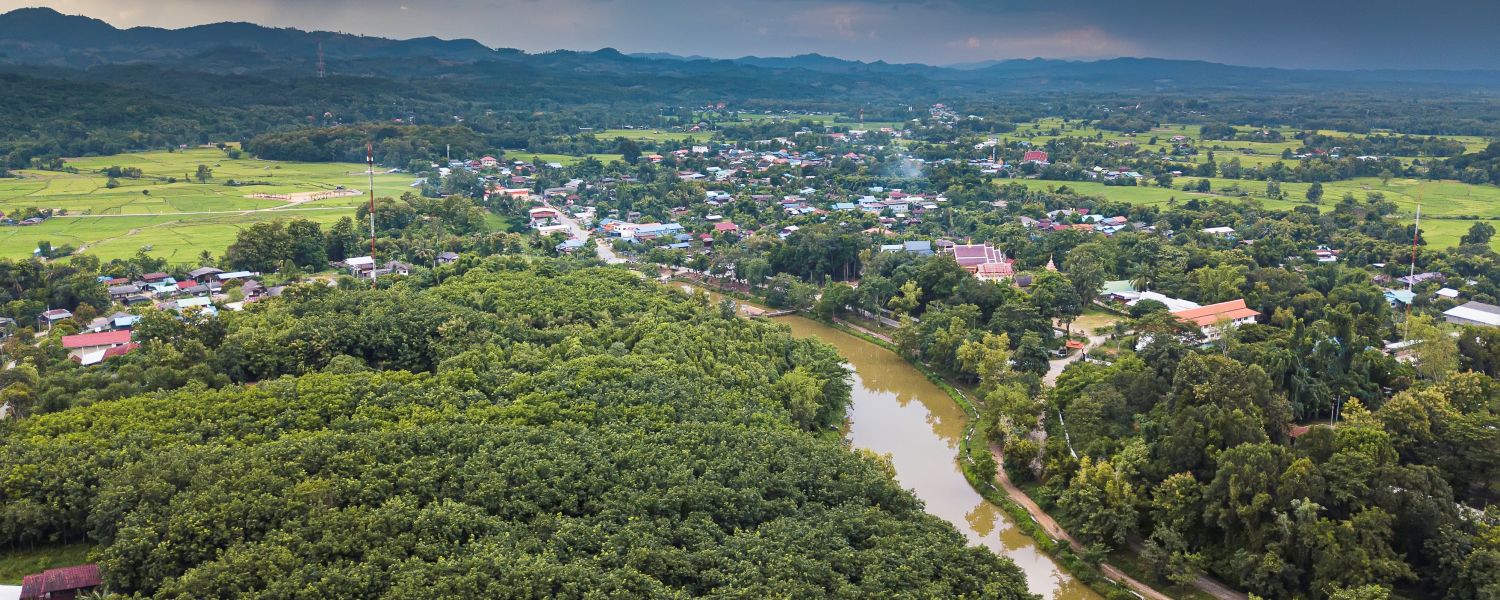In Bolikhamxay province, Lao PDR, villagers who used to hunt wildlife and over-harvested plants in their local forests are now managing forests sustainably and making a living by turning rattan vines into handicrafts. The surrounding forest is thriving, people’s incomes are rising and they are sharing profits with the wider community. This shows what can happen when people are allowed to manage forest resources.
Across the Mekong region, governments are giving communities more rights and opportunities to protect and benefit from local forests. The shift towards community forestry reflects a growing acknowledgement by policymakers that local people are well placed to manage forest resources. At the same time, the concept of community forestry is itself evolving.
“Until very recently, community forestry was thought of as a cost-effective way to reforest degraded land and provide communities with access to resources for their subsistence needs,” says Julian Atkinson. “Now though, there are growing efforts to ensure that communities not only manage and protect but also profit commercially from forest land.”
This shift could transform the lives of millions of people. Done right, it will enable development of sustainable rural livelihoods based on forests that are well-managed for the benefit of current and future generations. But it’s becoming clear that challenges often emerge when it comes to implementing community forestry policies. They are challenges that some countries are beginning to crack.
Developing community forestry
In recent years, all five countries in the Mekong region have made progress in devolving legal rights over forest resources to local people. By the end of 2018, the total area transferred into community hands surpassed 6.7 million hectares—and that’s just the start. These countries have ambitious targets for increasing the area in community control.
Myanmar, for instance, has a target of 920,000 hectares by 2030. The Ministry of Natural Resources and Environmental Conservation set up the Community Forestry National Working Group (CFNWG) to gather people from government departments, civil society organizations and the private sector to take things further and solve issues emerging on the ground.
Maung Maung Than, director of RECOFTC Myanmar, calls the CFNWG “a significant milestone in community forestry development”, and says civil society groups consider it to be a good platform for addressing issues. Among other things, the working group has produced a Community Forestry Strategy and is developing community forestry guidelines.
The CFNWG also provided input when Myanmar’s Forest Department updated the Community Forestry Instruction, which had been issued in 1995. Back then, the focus was on using community forestry to allow villagers to meet their subsistence needs. The revisions, made in 2016 and in 2019, allow villagers with community forestry certificates to benefit commercially from their forests by selling timber and products such as honey and rattan.
So far Myanmar is only about 30 percent of the way towards its target for community forestry. Bridging the gap between policy on paper and implementation on the ground has been challenging.
“Most rural people do not know that the Forest Department issued the new Community Forestry Instructions,” says Maung Maung Than. “They do not know they have a right to participate in community forestry.”
And even when people do know, the process is complicated and bureaucratic. Without help from intermediaries, poorly educated people in rural areas find the process too hard, he says.
Barriers to overcome
Recently revised laws in Lao PDR and Thailand also lay the foundations for using social forestry as a mechanism for community-based enterprises. But, across the Mekong region, people who have managed to navigate the bureaucracy to establish their rights and then set up a community forestry enterprise can face additional challenges.
“The processes for formalizing community forests are, at least in government eyes, largely resolved,” says Atkinson. “The key issues now are community forest management planning and enterprise development.”
While villagers often lack the knowledge and skills needed to manage forest resources and then to commercialize and market them, they are also hindered in their ambitions by regulatory barriers. In some countries, for example, regulations aimed at stopping illegal logging prohibit anyone from using a chainsaw in a forest.

“If you can’t use a chainsaw in a forest, you can’t easily prune trees,” says Atkinson. “This makes everything harder and more time consuming.” Meanwhile, the costs and red tape involved in doing business can prevent people managing community forests from making money on a commercial scale.
“In Cambodia, commercial enterprises need to register with the Ministry of Commerce, and pay royalties and taxes,” says Tol Sokchea “If they want a high price, they need to transport products to the market, but to do that they need a transport permit.”
And in some cases, while policies state that communities can commercialize certain forest resources, government agencies remain wary about letting them do this.
Another challenge is that villagers can’t easily get bank loans to invest in their community forests. Innovative financial mechanisms could solve this problem. In Thailand, for example, a ‘tree bank’ scheme allows villagers to use trees on their land as collateral when applying for loans. Another solution is to set up small rotating funds that are financed by villagers who take out low-interest loans or who pay in royalties from money they make through community forestry.

Maung Maung Than says the private sector could help, but that bringing communities and the private sector together is a challenge, in part because of deep mistrust.
“The private sector may suspect that a community lacks the capacity to manage its forest and provide sustainable supplies of forest products,” he says. “Communities, meanwhile, suspect that the private sector will exploit them commercially. Third-party facilitation is needed. It will take time. Trust-building takes time.”

